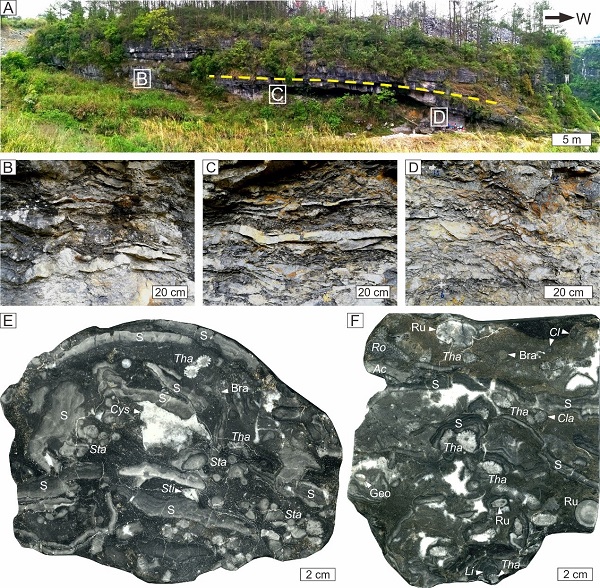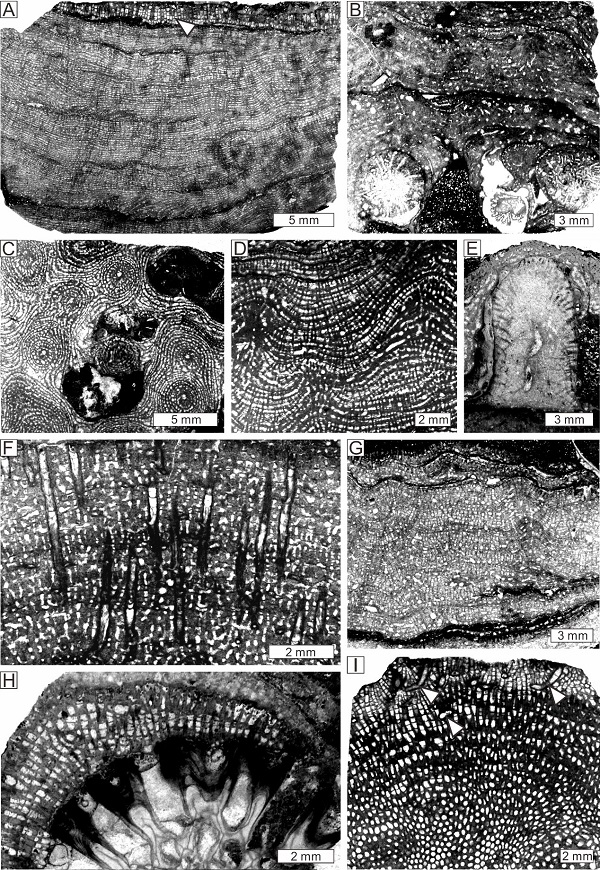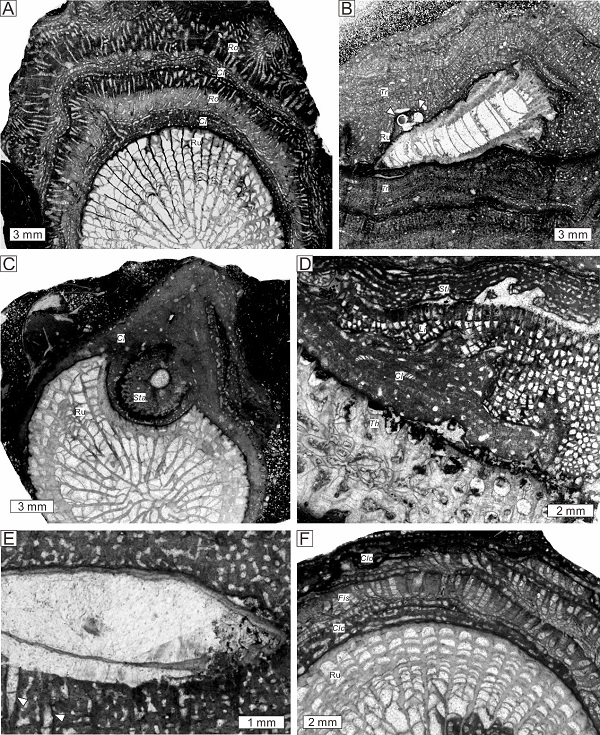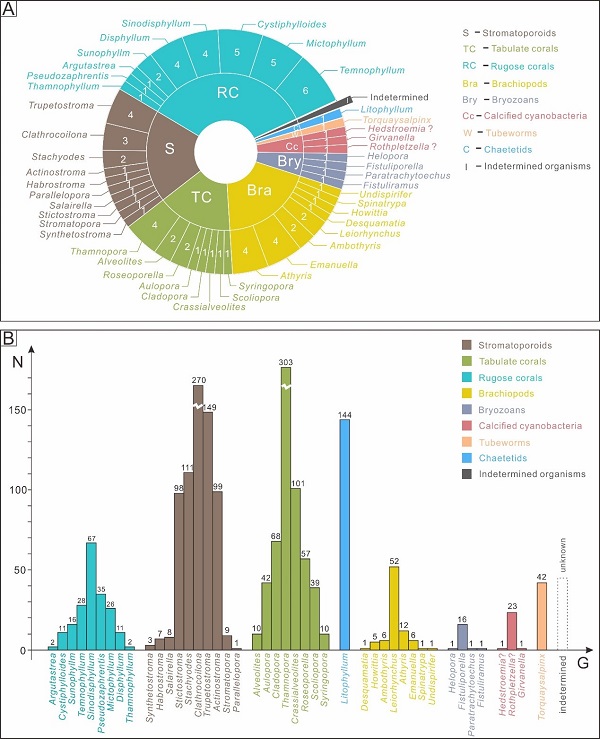Reefs are the most complicated and diverse ecosystems in the ocean, with highest levels of species diversity, habitat diversity, community structure and functional diversity. Therefore, they represent one of the most significant genetic treasures in the evolution of Earth life. Metazoan reef ecosystem reached its Phanerozoic acme in Givetian (Middle Devonian), however, detailed studies on the reef biodiversity, ecological interactions and community composition of Givetian reefs are still lacking, limiting our further understanding of the palaeobiodiversity change pattern and evolutionary model of reef ecosystem in critical geological time intervals.
Recently, a systematic study of the Givetian reef biodiversity was carried out by an international research group led by Assoc. Profs. QIE Wenkun and LIANG Kun, Mater HUANG Jiayuan from Nanjing Institute of Geology and Palaeontology, Chinese Academy of Sciences (NIGPAS), and collaborators from Brunel University, Guizhou University and Wuhan Center of Geological Survey, China Geological Survey. Related paper has been published online in Palaeogeography, Palaeoclimatology, Palaeoecology.
The team focuses on the detailed palaeontological and palaeoecological analysis of a Givetian reef located in Dushan Formation, Dahekou section, Guizhou Province, South China. In this study, 665 samples were collected in-situ in 7 m2 by 28 quadrats (50í50 cm) of the vertical reef outcrop, with 2804 thin sections being made and 10823 fossils being described. Detailed statistics of biodiversity and community paleoecology were carried out based on these large amounts of systematic data.
As so far, a total of 83 species belonging to 44 genera of 8 phyla were identified within 7 m2 of the Jiwozhai patch reef, including rugose corals (29 species, 9 genera), stromatoporoids (16 species, 10 genera), tabulate corals (13 species, 9 genera), brachiopods (16 species, 8 genera), Bryozoans (4 species, 4 genera), calcified cyanobacteria (3 species, 3 genera), chaetetids (1 species, 1 genera) and tubeworms (1 species, 1 genera). Among them, stromatoporoids (N=755), tabulate corals (N=630), rugose corals (N=198) and chaetetids (N=144) are the most common organisms. Consistent with the densely distributed species at Jiwozhai, complex ecological relationships, including extensive encrustations (N=716), spatial competition (N=35) and symbiosis (N=58) have also been found among different organisms. The in-situ collection of fossils and the sketch of the reef outcrop with high density clarify the spatial distribution characteristics of the reef organisms in Middle Devonian, which shows the stability of the spatial distribution of the main reef-building organisms while the discrepancy between the secondary reef-building organisms and the reef-dwelling organisms.
This study would provide important reference for the further correlation of global paleogeography and interpretation of the evolution and distribution patterns of the reef diversity during geological time.
This work is financially supported by the Strategic Priority Research Program (B) of Chinese Academy of Sciences, National Natural Science Foundation of China and Geological Survey Projects of China Geological Survey.
Reference: Huang, J., Liang, K.*, Wang, Y., Liao, W., Guo, W., Kershaw, S., Jeon, J., Qiao, L., Song, J., Ma, J., Li, Y., Tu, B., Tian, Y., Wang, Y., Wang, Y., Ma, J., Luo, M., Qie, W.*, 2020. The Jiwozhai patch reef: A palaeobiodiversity hotspot in middle Givetian (Devonian) of South China. Palaeogeography, Palaeoclimatology, Palaeoecology, https://doi.org/10.1016/j.palaeo.2020.109895

The Givetian Jiwozhai patch reef of Middle Devonian in Dushan, Guizhou

Stromatoporoids and chaetetids in the Jiwozhai patch reef

Biotic interactions among the reef organisms in the Jiwozhai patch reef

Statistics of biodiversity and abundance (Frequency) of Jiwozhai reef
Download:
